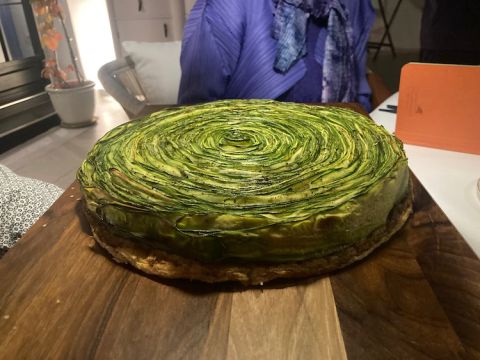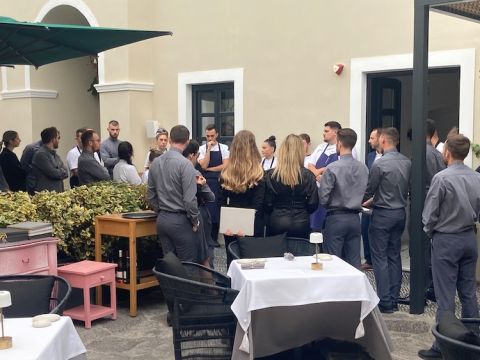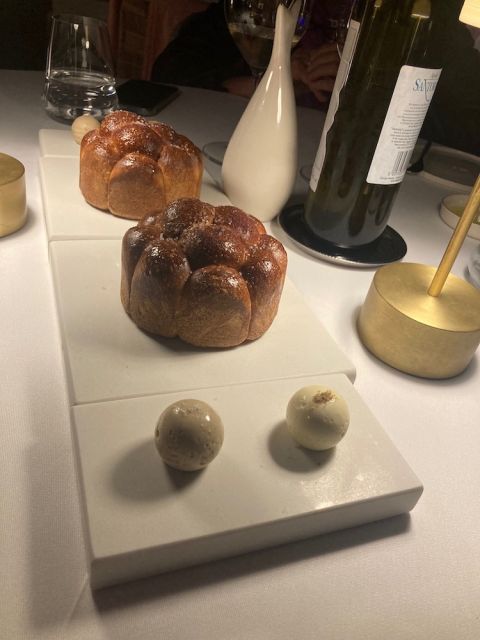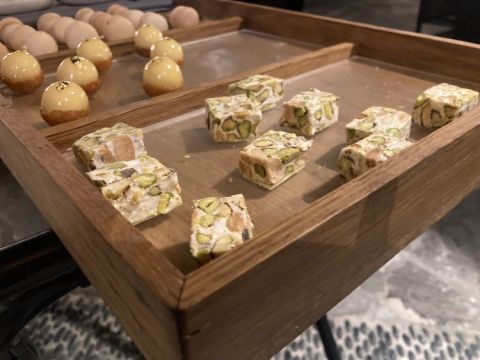Ambitious chefs have been moving into the kitchens of luxury hotels, a worldwide phenomenon which began in the 1990s and is becoming increasingly common as the wealthy seek comfort in new and hitherto uncharted destinations. Paris, London, New York are full of such combinations of high-profile chefs and smart hotels. Today it is the turn of Tel Aviv, Mexico City and the Greek islands of Santorini and Mykonos too.
The Katikies collection of six luxury hotels on Santorini and one on Mykonos (with more to follow) has grown organically since its modest founder Nikos Pagonis established the company 30 years ago. Since then it has become a byword for stylish accommodation, great service and, until a year ago, pretty good food.
But it was this last respect, referred to in hotelspeak by those awkward initials F&B ( food and beverage), which caused Katikies’ general manager, Vasileios Koumpis, his most frequent and his biggest headaches. ‘Our guests want the best of everything. And when they stay for an average of four nights in one of our hotels, they want to eat out in the various restaurants in our other hotels’, he explained to me. ‘I was finding that I did not have the confidence to send them off to another of our hotels and expect them to eat as well. And dealing with six different head chefs was taking up all of my time. They all had different ideas. They were all competing with each other and I began to believe that this was to the detriment of the customer.’
Koumpis came to this challenge with two great advantages: he was neither from the hotel world nor that of F&B. His training has been in financial administration before a career as a business consultant during which time he had met Pagonis. ‘I’m a numbers man’, was his constant refrain as we dined together recently. So he was uninhibited by the norms in the industry or what had been tried and worked, or failed, to date.
His idea was simple and novel. He decided to approach Ettore Botrini, one of the leading chef-restaurateurs in Greece, where he is consistently voted ‘the best chef’, and asked him to take over the kitchens of the seven hotels in the group. He also had an ace up his sleeve.
Botrini was an extremely sensible choice. He had grown up in his family’s restaurant on Corfu; he too had studied business administration, in Lausanne; he had established his own very successful restaurant, Botrini, in Athens; and with one eye on expansion he had already established a consultancy arm. But cooking obviously remains his passion, as evidenced by his appearance at Selene, the restaurant within the Katikies Garden hotel, as he moved from the kitchen round the tables – wearing his chef’s whites and his trademark black baseball cap – at a celebration dinner for Katikies’ Vedema wine weekend, organised by Yiannis Karakasis MW.
Koumpis and Botrini met for the first time in December 2020 and Botrini was excited at the proposal. Koumpis’s ace was played. Selene (in ancient Greek meaning the personification of the moon) had been the name of the most famous restaurant in Thira, Santorini’s capital, since 1985 when it was first opened by famous local chef Giorgios Hatzigiannakis before it closed and the name was bought by the Katikies group. The opportunity to reopen the Selene restaurant in the newly renovated Katikies Garden hotel, originally a monastery, proved particularly attractive to Botrini and on 1 February 2022 this new partnership was announced.
Botrini has brought a sensible approach to the writing of the menus, one that delivers consistency and flair. The breakfast menus, which has revived the traditional Greek milk pie, and the all-day menus are now similar in all the hotels, but in the evenings each hotel has a different identity, and with it a different menu. And the combination of working under Botrini with the backing of a major hotel company seems to have excited many young Greeks to come and work here for the season that runs from April to mid October.
We were lucky enough to eat at three of the different hotels. Katikies Oia, Katikies Kirini and Katikies Garden. At each of them the wine selection, under the guidance of Karakasis and the expert eye of sommelier Michalis Theodorakis, was excellent. So too was the service overall, perhaps the consequence of the noisiest staff briefings I have ever encountered just before 6 pm every night. Koumpis told me that the spirit that these engender even goes as far as staff giving each other birthday presents.
Katikies Oia
In the heart of the crowded town of Oia (pronounced Eeya), we went down many steps to a table overlooking the caldera, the remains of the island after the famous volcanic eruption, with a breathtaking view. This was my first encounter with Botrini’s food and it was perhaps this fact – plus the location – that made this seem the most exceptional cooking of all.
A series of excellent snacks to start with were bigger and far more complicated than any word in English might suggest: a wild-mushroom macaroon; a pastry case loaded with shelled fresh peas, laced with crème fraiche and herbs; and one dish that required a knife and fork, called ‘carbonara’ the sauce of the famous pasta dish, served here without the pasta and moulded into a semi-solid form that was really thrilling. Jancis fell in love with the bread below and one of its accompanying butters.
Katikies Kirini
Only a few hundred metres from Katikies Oia, this has similar views over the famous caldera. Here one really gets an impression of the caves that riddle the island and from which hoteliers have to devise their interiors. Again there were an awful lot of steps down to the restaurant (there is a lift half of the way up!) which is also made up of a sequence of arched caves, all painted pristine white.
This restaurant’s menu has a definite Italian accent. There is an excellent version of vitello tonnato; Santorini melon and prawns; as well as an extremely refreshing version of the white meat of crab enlivened with summer vegetables. Of the three pasta and rice dishes, a pasta mista with prawns was slightly disappointing as the pasta and shellfish were not that well integrated. This was almost made up for by a delicious lemon-meringue dessert.
Katikies Garden
We ate in the hotel's restaurant Selene twice thanks to BA cancelling our return flight, with the first night a gala dinner of 13 courses created by three well-known Greek chefs, Botrini, Theodoris Papanikolaou and Panos Tsikas. As with all such events, some courses were better than others and there was overall too much food and wine. Less is undoubtedly more.
The second night we ate here the food and service were exceptional. A tart of skaros, a local fish; a piquant tomato-stuffed taco; a clever play on spanakopita, the ubiquitous Greek spinach pie; a dish of spaghetti with sea urchin and slightly overpowering ‘nduja; and a petit four of nougat stuffed with pistachio and almonds, which I was lucky enough to wash down with a glass of dark, luscious Santorini Vin Santo 1980, were my highlights. At the end Selene's two permanent chefs came to say hello, Spyros Katridis remembering his time in London cooking for Nuno Mendes at Viajante.
As this arrangement between Botrini and Katikies hotels approaches the end of its first season, both parties are to be congratulated. It is quite an achievement to run the three restaurants we ate in to such a high standard but it was the ‘esprit’ of the teams that we met that created the most long-lasting impression on me.
Neither the rooms nor the menus we enjoyed at the Katikies hotels are inexpensive (many of our fellow guests seemed to be spending nice, strong American dollars but we were lucky enough to be guests of the hotel because Jancis was participating in the Vedema wine event): from €650 a night for the rooms and from €160 for the menus. The season runs from April to mid October. This is an island that is definitely for the fit: there are many, many steps everywhere and very little of the island is flat. The Aegean and the sky are as blue as they appear in every photo and the buildings are as white. And Santorini’s wines are fascinating. You may expect to read more about them here.



















